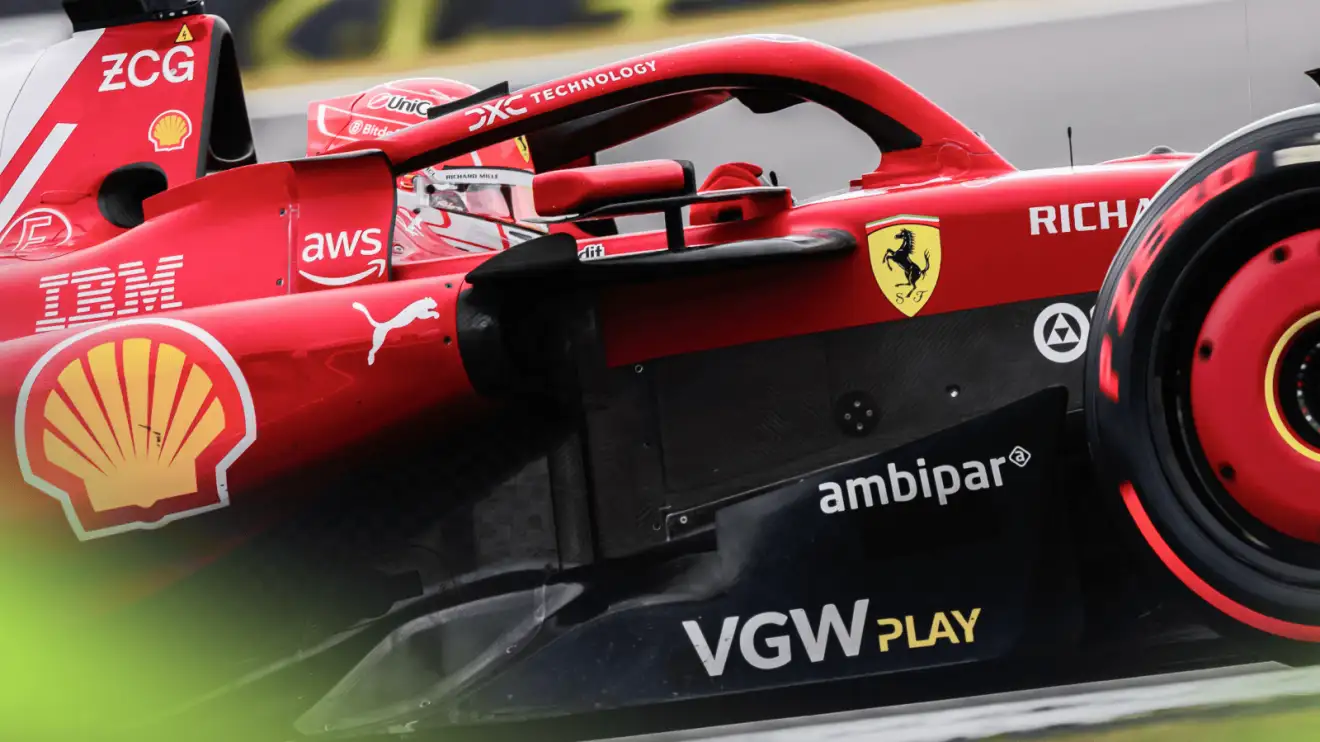Fresh Ferrari F1 2026 design details rumoured as Project 678 bursts into life – report

Charles Leclerc (Ferrari SF-25) on track in final practice at the 2025 British Grand Prix
Ferrari is reportedly set to revert to a pushrod rear-suspension layout for the first time since 2010 with Project 678, the team’s F1 2026 car.
Ferrari’s suspension choices have been regularly questioned over recent years, with the Scuderia and customer outfit Haas the only two teams still operating with a pullrod suspension at the rear of the car.
Ferrari to move to pushrod rear suspension for F1 2026 season?
The Scuderia switched to a pullrod front suspension ahead of the F1 2025 season, following in the footsteps of the likes of Red Bull and McLaren.
Formula 1 will introduce new regulations for next season with the chassis and engine rules being overhauled simultaneously.
The sport will embrace 50 per cent electrification, fully sustainable fuels and active aerodynamics in some of the biggest technical changes in F1 history.
And it has been rumoured that F1’s new era will see Ferrari compete with a pushrod rear suspension for the first time in 16 years.
Lewis Hamilton vs Charles Leclerc: Ferrari head-to-head scores for F1 2025
👉 F1 2025: Head-to-head qualifying statistics between team-mates
👉 F1 2025: Head-to-head race statistics between team-mates
A report by Italian publication Auto Racer has claimed that the team’s F1 2026 car – codenamed Project 678 – will feature a pushrod layout at the rear.
The Ferrari F10, driven in competition by Fernando Alonso and Felipe Massa during the 2010 season, was the last Ferrari F1 car to feature a pushrod rear suspension.
Alonso, now of Aston Martin, came tantalisingly close to a third world championship with Ferrari in 2010, missing out on the title to Red Bull’s Sebastian Vettel by just four points.
Ferrari remains without a world title of any kind since winning the 2008 constructors’ championship, with Kimi Raikkonen crowned the Scuderia’s last drivers’ world champion in 2007.
If true, the move away from ground-effect regulations and to a smaller diffuser for 2026 will likely have contributed to Ferrari’s decision to adopt a pushrod rear suspension for next season.
The change is likely to have been overseen by new technical director Loic Serra, who arrived as Enrico Cardile’s successor in October 2024.
Cardile led the car’s design prior to his departure for Aston Martin last year, with the Italian telling PlanetF1.com and other media outlets at the launch of the team’s 2024 car that Ferrari saw no clear performance gains when comparing pushrod and pullrod suspension layouts.
Cardile’s exit, combined with the arrival of Serra, whose expertise is believed to be in the field of vehicle dynamics, has also likely influenced the decision to commit to a pushrod rear suspension with Project 678.
Fred Vasseur, the Ferrari team principal, claimed earlier this year that the development of the team’s 2025 car was “practically finished” when Serra started work at Maranello last autumn, limiting his influence on the design of the current chassis.
The suggestion of a move to a pushrod rear suspension for F1 2026 come after a report earlier this week claimed that Ferrari is to make fewer changes than originally planned to it suspension for next season.
It was claimed that the SF-25’s improved performance level at the United States and Mexican grands prix, where Charles Leclerc claimed podium finishes, had ‘eliminated many doubts about some final choices that still had to be made for 2026.’
More on Ferrari drivers Charles Leclerc and Lewis Hamilton from PlanetF1.com
It emerged last month, meanwhile, that Ferrari is working on a ‘revolutionary’ new engine for 2026.
It was claimed in Italy that the team’s new power unit will feature an aluminum alloy cylinder head featuring ‘a top-secret intake system.’
The move reportedly came after a ‘highly innovative steel cylinder head’ solution, proposed by outgoing head of ICE (internal combustion engine) and research and development Wolf Zimmermann, was ‘abandoned’ due to reliability concerns.
The Italian media has been historically accurate when it comes to predicting technical details of new Ferrari F1 cars.
The team’s move to a pullrod front suspension and a darker livery, as well as the decision to move the cockpit further back, all emerged months before the SF-25 was officially launched in February this year.
Read next: Why F1 should rethink closed-door policy for 2026 secret shakedown test





